Last week, I mentioned a mistake in the novel Skylark Mission with the mention of Japanese automatic rifles in World War II. I thought I would discuss small arms of World War II with some emphasis on “automatic rifles.” I started writing and ended up with multi-part series.
Modern firearms have their origin in the 1880s. The French Lebel M 1886 used smokeless powder which was a revolutionary change. Bullets could be smaller with higher velocities and accuracy to 1,000 yards. The Lebel used an under-barrel tube magazine holding 8 cartridges. The rifle was long at 50.9 inches and heavy. The idea at the time was for ranks of riflemen with long rifles sticking out between the previous rank. This was the rifle France used for colonial expansion in the 1890s, fought Word War 1 and even used by some French troops in World War II.

Lebel Rifle
Mannlicher came out with bolt action rifle in 1885, the Germans with the Gewehr 1888. Improvements were made through the 1890s culminating with the Mauser Model 1898. During this time the Mauser rifle was a huge success with the rifle adopted by Sweden, Spain, Turkey, Chile, Portugal, Brazil, Argentina, Serbia, China, Columbia.
These rifles were cutting edge technology for the 1890s. Most fired overpowered cartridges. The German Mauser used the 7.92 x 57 mm, the United States the 7.62 x 63 (.30-06). Those at least were rimless cartridges that were easier to use in box magazines for machine guns. The British used the .303 (7.7 x 56R) for the Lee-Enfield and the Russians 7.92 x 54R. These bullets were fine for use on the Northwest Frontier in India against Pathans, Central Asia against Turco-Mongol tribes, the Arizona border against Mexican bandidos and revolutionaries, or against Tuaregs in the Sahara. These bullets had effective ranges to 1000 meters.
Not all nations used big bullets. The Dutch, Italians, and Japanese all used 6.5 mm bullets. Some writers view these as under-powered, but all these cartridges were more than 50 mm in length. You have the benefit of less recoil and shoulder fatigue if firing for a while. You can also design some nice shortened carbine versions for specialists, cavalry, artillery etc. I have handled the Mannlicher-Carcano carbine and it does have a nice balance to it.
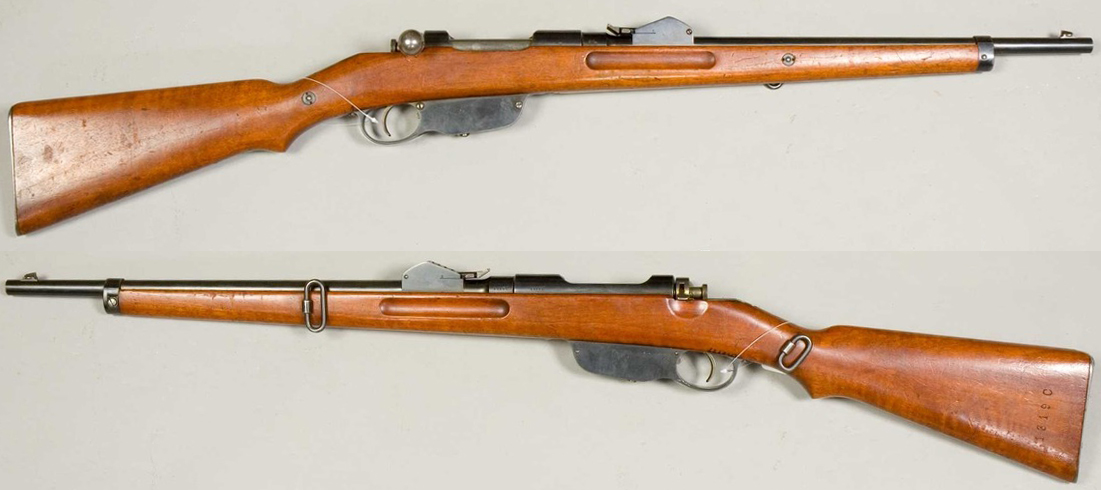
Mannlicher Carbine
The Boer and then the Russo-Japanese Wars showed what a magazine rifles and machine guns could do to densely packed frontal attacks. The German Army made changes in 1908 to their Field Service Regulations giving more tactical lead to Sergeants as column would break down into platoons for a looser formation in attack the last 500 yards.
In World War I, it was found most fighting was at far shorter distances than what had been expected. Instead of shooting at 700 meters, much of the fighting was 150-300 meters. Trench warfare dictated more firepower and smaller weapons.
The Allies and Central Powers were desperate to break the stalemate of trench warfare.
Tactics changed including the Germans adopting “Storm Trooper” tactics. There was a move away from pure firepower to that of assault power. An emphasis was changed from linear formations, good for rifle fire, to close combat. Grenades, pistols, knife, bayonet, trench clubs, and entrenching tool.
If you want to read a first-hand account, read Ernst Junger’s Storm of Steel. Junger enjoyed fighting. He had no regrets, no guilt, no PTSD.
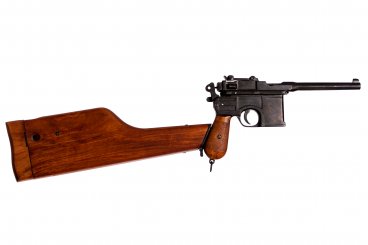
Mauser Pistol
The Germans played around with long barreled Luger pistols with extended magazines that held 32 bullets. Shoulder stocks were also used to increase the range. Assault troops began using the shortened Mauser rifles– the Karabiner 98A and Karabiner 98 AZ. These had originally been used by cavalry, foot artillery, bicyclists. They also invented the first sub-machinegun, the MP-18 that fired the 9 mm parabellum pistol round from a 32 round snail drum. The plan had been for 10% of assault troops to carry the sub-machine gun but about 30,000 were made.
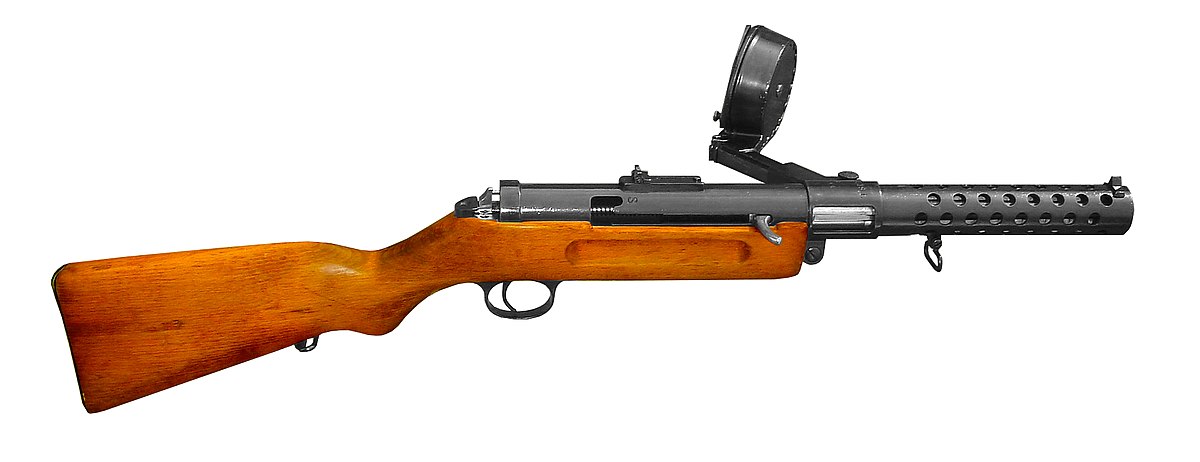
MP-18 Sub-machine gun
The Germans adapted the MG 08 machine gun to the 08/15 variant that could be carried on a sled for quicker movement. The Germans used the Danish designed Madsen that had a two- man crew.
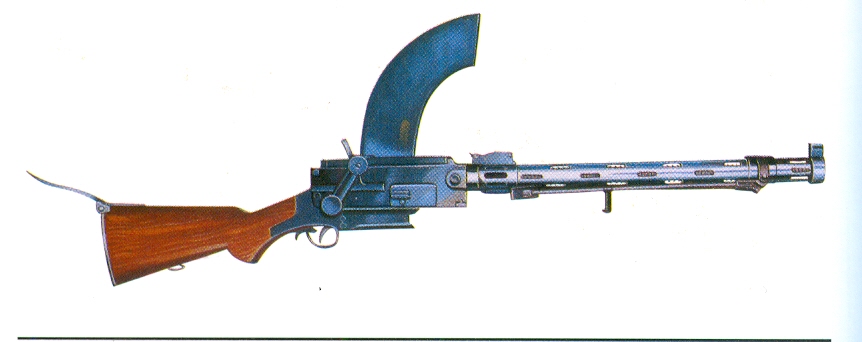
Madsen Light Machine Gun
The Ludendorff Offensive launched in March 1918 started out well but failed to achieve that decisive knock out blow. The Storm Troopers took heavy casualties and the offensive ran out of steam.
The allies were developing their own assault tactics. The British launched an offensive in August 2018 using Canadians and Australians as their shock troops. Commonwealth troops had the reliable Lee-Enfield SMLE. It was only 44.8 inches long and held 10 bullets in the magazine. Also, it had one of the shortest bolt action/turn/cocking mechanism of any bolt action rifle. A trained British Tommie could shoot a greater number of bullets than the opposing German using a Mauser rifle. The British also had the added benefit of having an increasing number of tanks.

Lee-Enfield Rifle
The Americans got the Browning Automatic Rifle in use in September 1918. The BAR was meant to be shot from the hip while moving across no man’s land. The U.S. Army had the Pedersen device which would convert a bolt action rifle to shoot .32 ACP bullets in semi-automatic mode. The war ended before the Pedersen device had a chance. The Thompson sub-machine gun was also in development as a “trench broom.” The sudden end to World War I put an end to small arms design for the time being. The participants were exhausted and bankrupt.
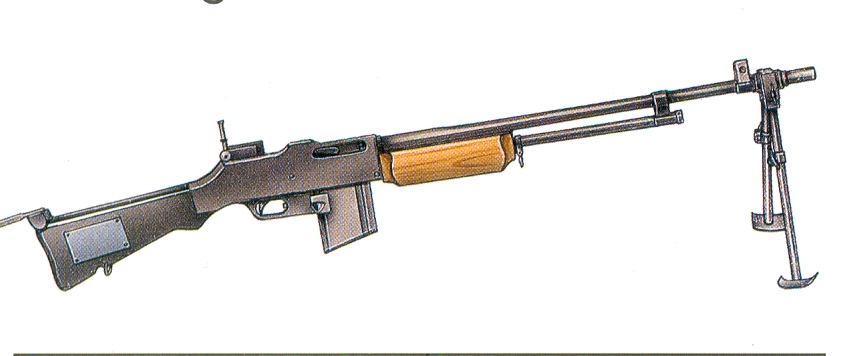
Browning Automatic Rifle
Please give us your valuable comment